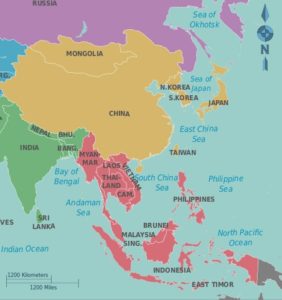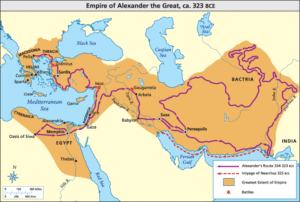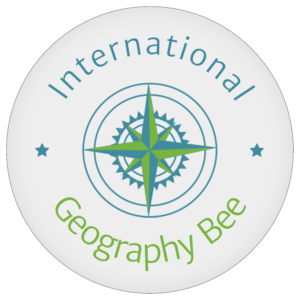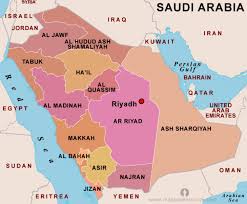The competitions listed below will be held at the 2024 International Geography Championships.
 Competition Type: Individual, 1 multiple choice exam used solely for seeding with 15 questions, 1 preliminary round of 25 questions, 1 final round of 25 questions. The same number of questions are played in all divisions in this event.
Competition Type: Individual, 1 multiple choice exam used solely for seeding with 15 questions, 1 preliminary round of 25 questions, 1 final round of 25 questions. The same number of questions are played in all divisions in this event.
- No Sample Questions Are Available
The Blitz was a new event for the 2022 International Geography Championships. The Blitz is a Bee event that will focus on a very specific topic in history that no one is expected to have any prior knowledge of. The topic itself was announced at breakfast of the competition day. In 2022, the topic was the geography of the Comoros. Students are given approximately 30-50 pages of reference material on the topic; all clues and answerlines in the tossups will be contained within these pages. After 35 minutes of studying, students take a 15 question multiple choice exam to determine seeding. Immediately thereafter, one round of 25 tossup questions is played. The top players in each room in each division then are given an additional 15 minutes to study, and then they compete in a 25 question final.
To avoid random guessing, all questions in the Blitz will be played according to IAC Bee Championships Playoffs scoring (6, 5, 4, and 3 points for power depending on the buzz, -2 for an incorrect response during the question, -1 for an incorrect response at the end of the question). All age divisions play the same questions.
 Vienna is one of the world’s great culinary centers, so what better place to debut the new Culinary Geography Bee! Topics covered include agriculture, famous restaurants, food brands, and the culinary traditions of the world’s countries and cultures. This competition will feature two 35 question preliminary rounds and one 30 question final round for the Middle and High School Divisions, and two 30 question preliminary rounds and one 25 question final round for the Intermediate and Elementary School Divisions. Parents (and other adults attending IGC) and Siblings (and other children 18 and younger) are also welcome to take part in two divisions just for them too! Parents will play the Middle and High School Division questions; Siblings will play the questions from the Intermediate and Elementary School Divisions.
Vienna is one of the world’s great culinary centers, so what better place to debut the new Culinary Geography Bee! Topics covered include agriculture, famous restaurants, food brands, and the culinary traditions of the world’s countries and cultures. This competition will feature two 35 question preliminary rounds and one 30 question final round for the Middle and High School Divisions, and two 30 question preliminary rounds and one 25 question final round for the Intermediate and Elementary School Divisions. Parents (and other adults attending IGC) and Siblings (and other children 18 and younger) are also welcome to take part in two divisions just for them too! Parents will play the Middle and High School Division questions; Siblings will play the questions from the Intermediate and Elementary School Divisions.
The East Asian Geography Bee made its debut at the 2022 International Geography Championships and will return for 2024. This bee covers the geography of China (including Taiwan, Hong Kong, and Macau), Korea, Japan, Mongolia, Asiatic Russia, the Philippines, Indonesia, Malaysia, Brunei, East Timor, Singapore, Vietnam, Laos, Cambodia, Thailand, and Burma, and their predecessor states and political entities. There are three rounds of preliminaries and one round of finals. All age divisions play the same 30 question rounds in the preliminaries and the finals, though questions might be shorter for the Intermediate and Elementary School Divisions.

 Competition Type: Individual, 3 preliminary rounds of 30 tossup questions + finals
Competition Type: Individual, 3 preliminary rounds of 30 tossup questions + finals
Many students who enjoy studying geography also enjoy studying history. This tournament lies at the intersection of these two disciplines, as players will be challenged on their knowledge of historical geography. This includes bygone political configurations, as well as the role that geography has played in determining the outcome of historic events. All age divisions play the same 30 question rounds in the preliminaries and finals, though questions may be shorter for the Intermediate and Elementary School Divisions.
 This event counts 1/3 towards the overall IGC Individual Title for the Middle School, Intermediate, and Elementary School Divisions.
This event counts 1/3 towards the overall IGC Individual Title for the Middle School, Intermediate, and Elementary School Divisions.
One of the showcase events of the IGC, the International Geography Bee World Championships is a rigorous buzzer-based quiz tournament featuring questions on all aspects of world geography. This is a required event for all competing students. 5 preliminary rounds and 2 playoff rounds will be contested (with 35 questions in each round for all age divisions), and the final placements of students will count 1/3 towards the overall IGC Individual Championship Title together with the Battery and the Written Exam for the Middle School, Intermediate and Elementary School Divisions.
 In the International Geography Bowl, teams who represent US states / territories and other countries at IGC compete against each other in six preliminary and three playoff rounds. Depending on the number of teams in a division, games may feature two or three teams. Note that the rules for this competition will follow standard Varsity and Junior Varsity National / International History Bowl rules for all age divisions. In games with 3 teams, the rules are the same, though in the 3rd quarter, the leading team picks first, then the second place team, and then the third place team. When the second place team picks their category, the third place team gets first shot at the bouncebacks, and then the first place team gets any that both of the first two teams missed. When the third place team gets their category, then the first place team gets the first chance at the bouncebacks, and then the second place team gets any the first two teams missed.
In the International Geography Bowl, teams who represent US states / territories and other countries at IGC compete against each other in six preliminary and three playoff rounds. Depending on the number of teams in a division, games may feature two or three teams. Note that the rules for this competition will follow standard Varsity and Junior Varsity National / International History Bowl rules for all age divisions. In games with 3 teams, the rules are the same, though in the 3rd quarter, the leading team picks first, then the second place team, and then the third place team. When the second place team picks their category, the third place team gets first shot at the bouncebacks, and then the first place team gets any that both of the first two teams missed. When the third place team gets their category, then the first place team gets the first chance at the bouncebacks, and then the second place team gets any the first two teams missed.
Parents, siblings, and everyone joining competing students at IGC! This is your chance to get on the buzzer if you’d like to play some geography bee questions of your own! We’ll play a separate age division for adults (i.e. the Parents Bee though teachers, coaches, other family members and family friends are welcome to compete), and at least one for children 18 and younger (more than one if there’s sufficient interest). This Bee will feature 3 30 question preliminary rounds and one 30 question final round for all age divisions. This Bee will take place during the Hexathlon (which does not permit spectators), so this is a perfect opportunity to try out the buzzer yourself if you are interested.

The Scramble is a Bee-style event unique to the International Geography Championships (and the International History Olympiad). While IAC quiz tournaments typically reward long-term knowledge of numerous eras and places throughout history, the Scramble is a tournament where the focus will only be announced shortly in advance of the start of IGC. Players who take the Scramble challenge will then have ten days to cram on the topic. The Scramble will be played on the opening afternoon / evening of IGC so that players do not afterwards need to retain what they have studied for the Scramble while they are preparing for other events. Can you cram as well as you can study for the long-term? Good luck in this challenging tournament!
The Scramble topic for the 2022 International Geography Championships was the Geography of Saudi Arabia.
The idea of the Scramble is not to test students’ prior geography knowledge, but rather, who is most capable of learning the most about a subject in a short amount of time. Be sure to study not just physical and political geography of Saudi Arabia, but the cultural, economic, historical, and environmental geography as well. Remember that we have nearly 100 questions to ask, so the topics are going to get quite specific! Past Scrambles have shown that a little bit of extra effort in preparation can go a long way towards securing a medal. If you’re looking to how to study, why not make flashcards with a few of the most important facts about each of the 5-15 most significant cities, provinces, mountains, bodies of water, etc.
 The South Asian Geography Bee made its debut at the 2022 International Geography Bee World Championships and will return for 2024. This bee will cover the geography of India, Pakistan, Afghanistan, Nepal, Bhutan, Bangladesh, Sri Lanka, and the Maldives and their predecessor states and political entities. There will be three rounds of preliminaries and one round of finals. All age divisions will play the same 30 question rounds in the preliminaries and finals (though questions might be slightly shorter for the Intermediate and Elementary School Divisions).
The South Asian Geography Bee made its debut at the 2022 International Geography Bee World Championships and will return for 2024. This bee will cover the geography of India, Pakistan, Afghanistan, Nepal, Bhutan, Bangladesh, Sri Lanka, and the Maldives and their predecessor states and political entities. There will be three rounds of preliminaries and one round of finals. All age divisions will play the same 30 question rounds in the preliminaries and finals (though questions might be slightly shorter for the Intermediate and Elementary School Divisions).

The Visual Geography Bee competition deals entirely with geographic images of all sorts. Questions will include photographs; identifying people, places, and items from sight; maps; documents; graphs and charts; and more. Despite the visual focus, questions will still progress from harder clues and images to easier clues and images (i.e. multiple images will be shown within the same question). This Bee has 2 preliminary rounds of 35 questions and 1 final round of 30 questions for all age divisions.

